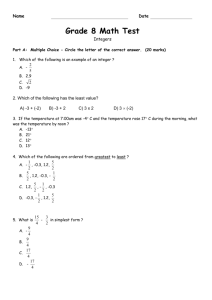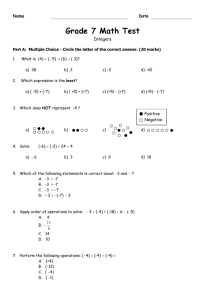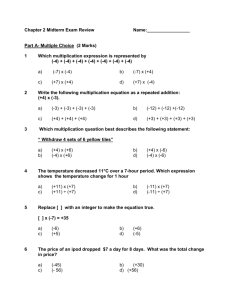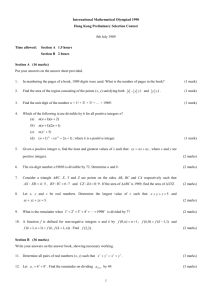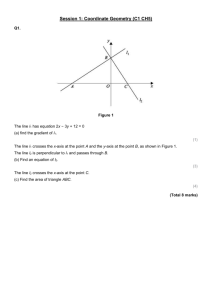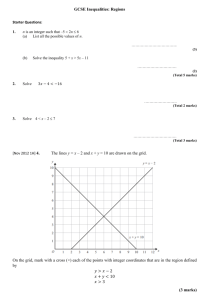se_95-96
advertisement
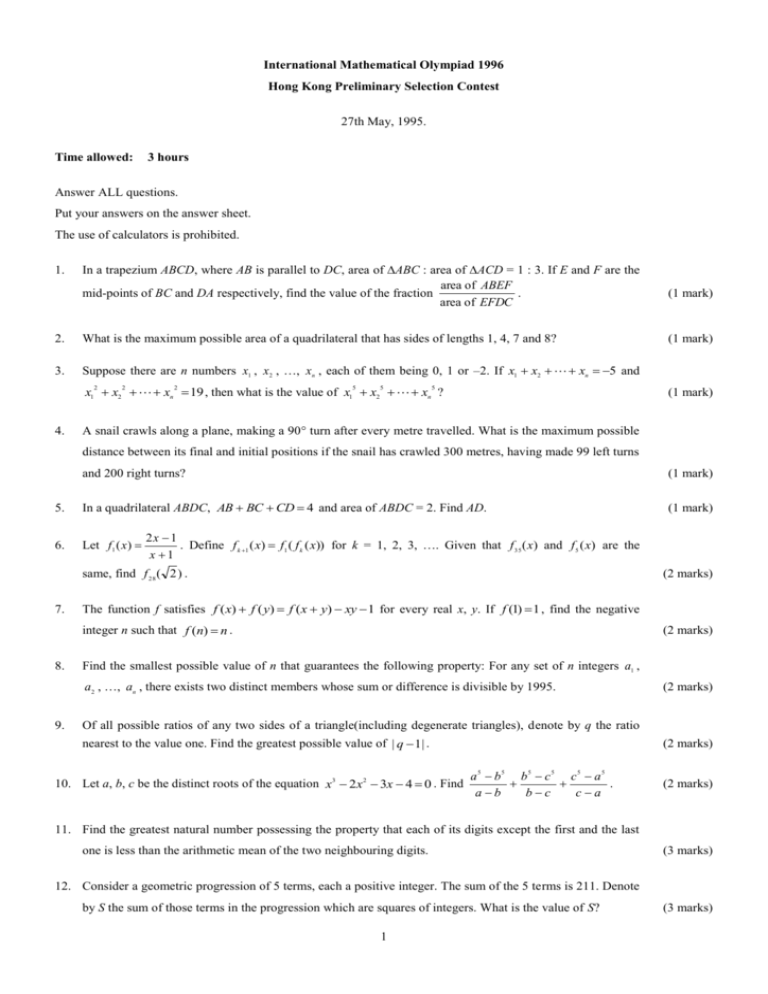
International Mathematical Olympiad 1996 Hong Kong Preliminary Selection Contest 27th May, 1995. Time allowed: 3 hours Answer ALL questions. Put your answers on the answer sheet. The use of calculators is prohibited. 1. In a trapezium ABCD, where AB is parallel to DC, area of ABC : area of ACD = 1 : 3. If E and F are the area of ABEF mid-points of BC and DA respectively, find the value of the fraction . area of EFDC 2. What is the maximum possible area of a quadrilateral that has sides of lengths 1, 4, 7 and 8? 3. Suppose there are n numbers x1 , x2 , …, xn , each of them being 0, 1 or –2. If x1 x2 xn 5 and x1 x2 xn 19 , then what is the value of x1 x2 xn ? 2 4. 2 2 5 5 5 (1 mark) (1 mark) (1 mark) A snail crawls along a plane, making a 90 turn after every metre travelled. What is the maximum possible distance between its final and initial positions if the snail has crawled 300 metres, having made 99 left turns and 200 right turns? (1 mark) 5. In a quadrilateral ABDC, AB BC CD 4 and area of ABDC = 2. Find AD. (1 mark) 6. Let f1 ( x ) 2x 1 . Define f k 1 ( x) f1 ( f k ( x)) for k = 1, 2, 3, …. Given that f 35 ( x) and f 5 ( x) are the x 1 same, find f 28 ( 2 ) . 7. (2 marks) The function f satisfies f ( x) f ( y) f ( x y) xy 1 for every real x, y. If f (1) 1 , find the negative integer n such that f (n) n . 8. (2 marks) Find the smallest possible value of n that guarantees the following property: For any set of n integers a1 , a2 , …, an , there exists two distinct members whose sum or difference is divisible by 1995. 9. (2 marks) Of all possible ratios of any two sides of a triangle(including degenerate triangles), denote by q the ratio nearest to the value one. Find the greatest possible value of | q 1| . 10. Let a, b, c be the distinct roots of the equation x3 2x2 3x 4 0 . Find (2 marks) a 5 b5 b5 c5 c5 a 5 . ab bc ca (2 marks) 11. Find the greatest natural number possessing the property that each of its digits except the first and the last one is less than the arithmetic mean of the two neighbouring digits. (3 marks) 12. Consider a geometric progression of 5 terms, each a positive integer. The sum of the 5 terms is 211. Denote by S the sum of those terms in the progression which are squares of integers. What is the value of S? 1 (3 marks) 13. Let x, y and z be distinct integers satisfying ( x y)( y z)(z x) x y z . Find the minimum value of | x y z | . (3 marks) 14. Find the smallest positive integer which can be expressed as the sum of distinct positive integers a, b and c such that a b , a c and b c are perfect squares. (3 marks) 15. The area of ABC is 60. Points D and E trisect side AC (D being nearer A). The median to BC intersects BD at G and BE at H. Find the area of BGH. (3 marks) END OF PAPER 2
